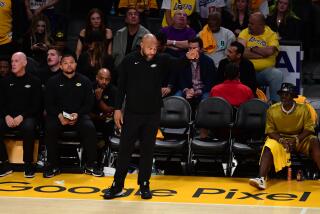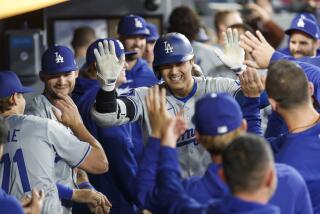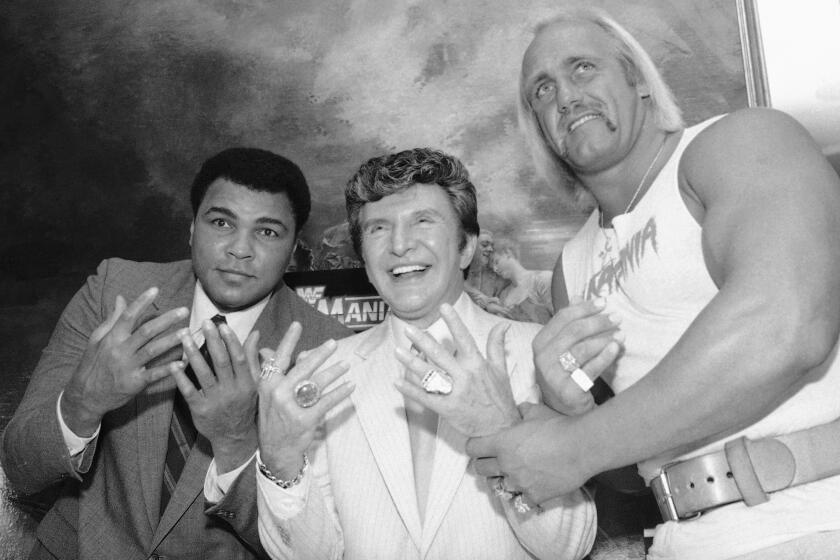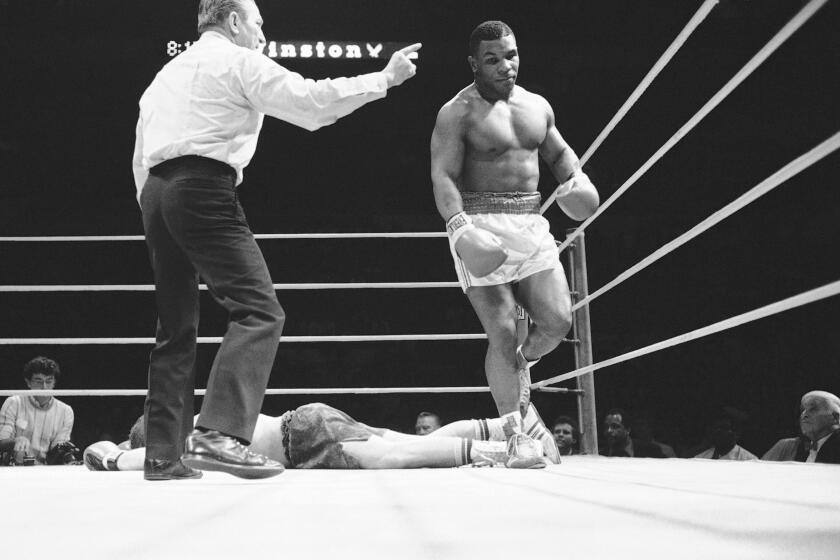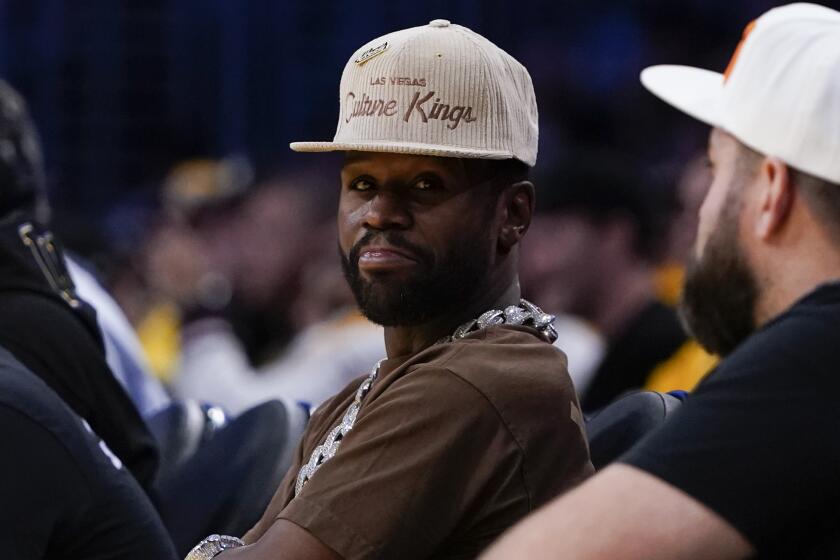A Journey From Doughnuts to Dollars
At age 11, Manny Pacquiao didn’t know boxing trunks from tree trunks. Surviving in the ring wasn’t his goal. He was just trying to survive, period.
Born into poverty in the Philippines, he would roam the streets, trying to sell doughnuts when he wasn’t working in the fields with his family.
The year was 1990 and, on the same side of the world, a momentous event was taking place. Mike Tyson, the supposedly unbeatable heavyweight champion, had been knocked out in Tokyo by Buster Douglas, a 42-1 underdog.
All around him, Pacquiao saw people carrying radios and reacting in stunned shock. He heard the word “knockout” and saw tears in the eyes of some.
“He didn’t know what it meant to be knocked out,” Pacquiao’s manager, Keith Davidson, said, “but, he thought, if a boxer can bring people to tears like that, if he could move people like that, then he wanted to be a boxer.”
Fifteen years later, Pacquiao has moved a nation. With a 39-2-2 record, 30 knockouts, a memorable upset victory over Marco Antonio Barrera and a dramatic draw against Juan Manuel Marquez, Pacquiao has become a superstar in the Philippines.
His super-featherweight match tonight against Erik Morales (47-2, 34) at Las Vegas’ MGM Grand Garden Arena has captivated the Philippines.
“For something like this, our nation stands still,” said Homer Sayson, a sports columnist for the Sunstar Cebu. “We are having hard times in our country. There is terrorism. There is poverty. There are kidnappings every day. We find solace in Manny Pacquiao.”
Pacquiao has also found support with the Las Vegas oddsmakers, who have installed him as a 7-5 favorite even though he is coming up to 130 pounds for the first time to face Morales. Morales is coming off a loss to Barrera in November, the second time he has lost to Barrera in their well-fought trilogy. After getting an 11th-round TKO victory over Barrera in 2003, Pacquiao had the draw against Marquez followed by a fourth-round TKO win over Fahsan Thawatchai in his last ring appearance in December.
Tonight Pacquiao takes a huge step up in terms of quality of opponent. Can he bring with him the speed and mobility he had at a lower weight? Does Morales, who has been through a series of punishing fights, have enough left to withstand what figures to be another brutal bout?
There is no question about tonight’s end result in the Philippines, where they have watched their native son gain prominence in a process that has taken more than a decade.
When Pacquiao announced that he was out of the doughnut business, but hoping to win big dough in the boxing business, it didn’t go over too well in the Pacquiao household.
So he left home at 13 to seek his fortune as a fighter and wound up on a national boxing team, the Philippine government taking care of his room and board. Pacquiao turned out to be a bargain, amassing a 60-4 amateur record.
At 16, he turned pro and won his first 11 fights. Then he met reality in the person of Rustico Torrecampo, who knocked Pacquiao out in the third round of their 1996 fight. It was a tough but valuable lesson for Pacquiao, then 17, who rose from that failure to win the World Boxing Council flyweight championship two years later via an eighth-round knockout of Chatchai Sasakul in Thailand.
Pacquiao’s success was short-lived. A year later, he lost the title to Medgoen Lukchaopormasak, lost before the first punch was thrown when Pacquiao couldn’t get down to the required weight of 112. Pacquiao went through with the fight anyway, title or no title. And Lukchaopormasak put Pacquiao down with a body shot in the third round, the fight stopped at the 1:32 mark.
Already a rising figure in the Philippines, Pacquiao soon had the attention of the world because of a surprising TKO victory over Lehlohonolo Ledwaba in 2001 to win the International Boxing Federation super-bantamweight title, the win over Barrera and the Marquez fight, in which Marquez went down three times in the first round but rallied to earn the draw.
“It is something to behold,” Davidson said of Pacquiao’s high profile in the Philippines. “Over there, he has become what Elvis Presley was in this country in his heyday.”
That might be a slight overstatement, but there is no overstating Pacquiao’s influence among his fellow Filipinos. He has appeared in three Philippine movies and was even asked for his endorsement in the last election by President Gloria Macapagal-Arroyo.
“Everybody recognizes me,” Pacquiao said. “Kids, old people. All my countrymen are proud of me.”
No argument from Macapagal-Arroyo.
“The victories of Pacquiao are victories of the more than 76 million Filipinos,” she said. “The entire nation joins him in celebrating.”
About 40 Philippine legislators have come to Las Vegas for tonight’s fight.
But such honors come with a price.
“There is a lot of pressure on me,” Pacquiao conceded. “Because I have a lot of countrymen praying for me to succeed, I feel like I need to win every fight.”
*
(BEGIN TEXT OF INFOBOX)
Tale of the Tape
Measurements for tonight’s 12-round super-featherweight bout between Erik Morales and Manny Pacquiao at the MGM Grand, Las Vegas. Pay-per-view, card begins at 6 p.m.
*--* MORALES PACQUIAO Tijuana Birthplace Cabangal, Philippines 9-6-76 Date of birth 12-17-78 5-8 Height 5-6 72” Reach 67” 35” Chest normal 38” 37” Chest expanded 41” 12” Biceps 13” 10” Forearms 12” 29” Waist 28”
*--*
More to Read
Get our high school sports newsletter
Prep Rally is devoted to the SoCal high school sports experience, bringing you scores, stories and a behind-the-scenes look at what makes prep sports so popular.
You may occasionally receive promotional content from the Los Angeles Times.
